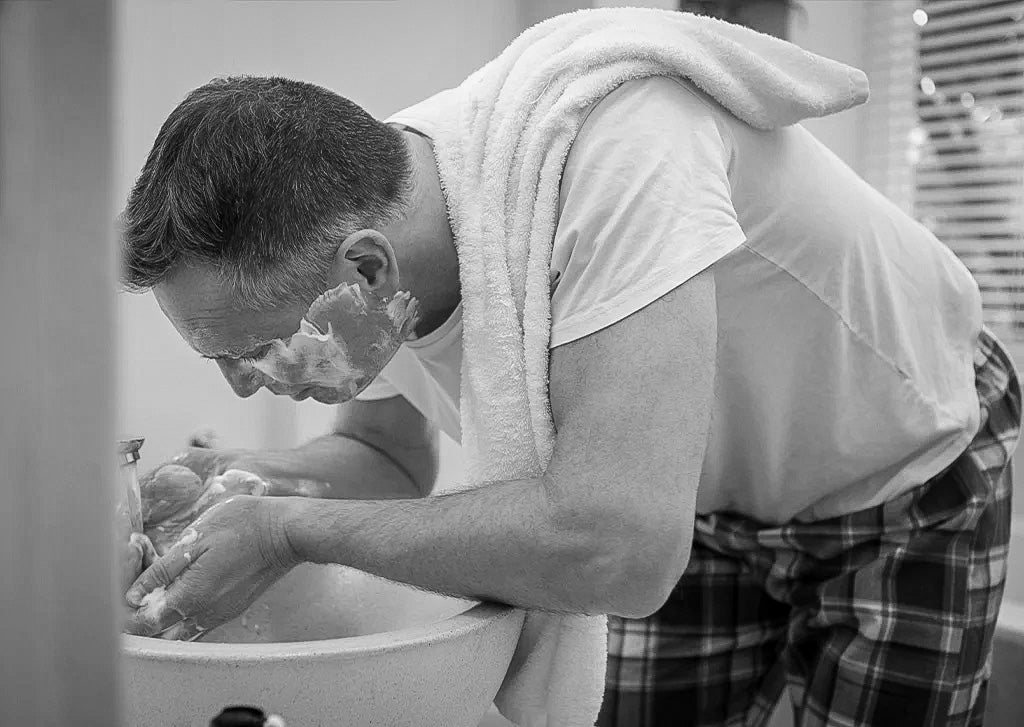Wet shave with a safety razor or
Razor made easy

More and more men are enjoying the benefits of a traditional wet shave. The razor and safety razor are particularly suitable for this. We outline their properties and show how you can use these two classic shaving utensils to remove your beard hair not only thoroughly, but also without causing injury.
Preparation – please soak once
Before you actually start shaving, you should soak your beard hair. Because then it is usually much easier to remove facial hair. If you like it practical, simply shave straight after showering. Alternatively, you can also use a damp cloth. The use of shaving foam is mandatory for a good wet shave. Massage this - preferably with a shaving brush, but if necessary your hand will suffice - onto the areas to be shaved and let it take effect briefly. Now you can continue with either the safety razor or the razor.
Safety razor – uncomplicated and inexpensive
Safety razors have been used for over 140 years. On the one hand, the safety razor is well suited for newbies when it comes to wet shaving because, unlike a straight razor, it is more forgiving of minor mistakes because the blade only protrudes a little. On the other hand, many experienced users also appreciate that shaving with a shaver is both uncomplicated and inexpensive. The main differences between safety razors are the weight, the length of the handle and, in some cases, the number of blades. However, classic models usually only have a single blade and rarely a two-layer blade. When handling, beginners should be careful to use scraping movements with minimal pressure that are perpendicular to the edge of the blades. Otherwise there is a risk of injury. An angle to the skin of around 30 degrees is perfect, with the so-called foam edge of the plane ensuring that the skin is taut and easy to shave. Overall, the safety razor is the perfect compromise between good shaving results and little effort.
Razor – traditional and thorough
If you prefer something even more traditional, you can use a razor for wet shaving, which men have used in a similar form for thousands of years. This generally requires a little more skill than shaving with a plane. Here too, an angle of around 30 degrees between the skin and the blade is recommended. It often takes a little practice to find the optimal angle of inclination of the blade for each area to be shaved. It's best to hold the razor with your thumb, index, middle and ring fingers so that the open handle faces away from you. Because there is no foam edge, it is recommended to pull the skin taut with your second hand while shaving. Using light pressure, move the blade across the surface of the skin in short, straight strokes, making sure that the razor blade always remains perpendicular to the cutting direction. Otherwise there is a risk of cuts in the skin. After the first pass with the beard stroke, a second pass in the other direction is often necessary to really remove all the stubble. Particular caution is required in problem areas – such as the corners of the mouth and above the lip. For real experts, shaving with a razor is a relaxing and almost meditative ritual that - provided you have a sharp blade - impresses with its distinctive thoroughness.




Comments